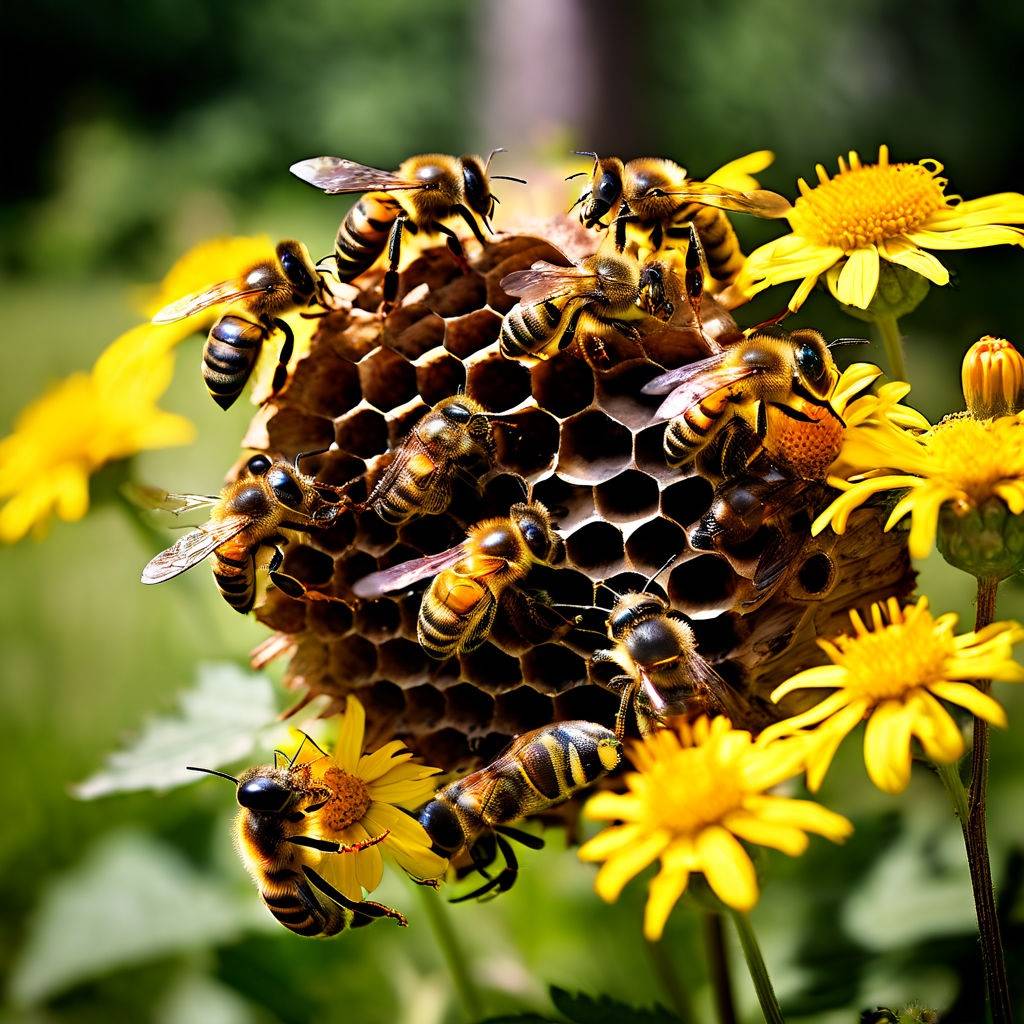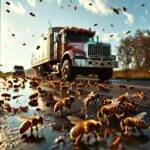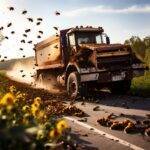As the temperatures rise in North Carolina, residents can expect an increase in insect activity. While many of these tiny creatures play a crucial role in pollinating plants and maintaining the ecosystem, some can pose risks to human health and property. It’s essential to be aware of these risks and take necessary precautions to coexist peacefully with these pollinators.
Identifying and Understanding Common Bees and Wasps
Bees and wasps are among the most common pollinators in North Carolina. Understanding their behavior and characteristics can help individuals mitigate potential risks.
Bumblebee: Gentle Pollinators with Mild Sting
Bumblebees are recognizable by their striped appearance and fuzzy bodies. While they can sting multiple times, they are generally reluctant to do so unless provoked. Their stings may cause localized swelling and discomfort but are typically not severe.
Carpenter Bee: Wood-Damaging Insects with Minimal Sting Risk
Carpenter bees, often mistaken for bumblebees, bore tunnels into wood for nesting. While their stings are not severe, they can cause structural damage to wooden structures over time. Managing carpenter bee populations can be challenging but is essential for preserving wooden structures.
Honeybee: Vital Pollinators with Economic Importance
Honeybees are crucial for pollinating crops and producing honey and other hive products. Despite occasional stings, they are valuable contributors to agriculture and ecosystems. Proper hive management is necessary to support honeybee populations and mitigate risks associated with their presence.
Cicada Killer Wasp: Large Predators with Limited Sting Threat
Cicada killer wasps are notable for their size but rarely pose a threat to humans. While their sting can cause discomfort, they are not aggressive unless provoked. Understanding their nesting behavior can help minimize interactions with these beneficial predators.
European Hornet: Beneficial Predators with Moderate Sting Risk
European hornets prey on insects and are beneficial for controlling pest populations. While their stings can be painful, they are typically not aggressive unless their nest is threatened. Managing outdoor lighting can help reduce interactions with these nocturnal insects.
Paper Wasp: Non-Aggressive Predators with Nest Defense Behavior
Paper wasps play a role in pest control but may sting when defending their nests. Understanding their nesting habits can help individuals avoid conflicts and minimize the risk of stings.
Bald-Faced Hornet: Aggressive Nest Defenders with Potent Sting
Bald-faced hornets are aggressive defenders of their nests and can deliver painful stings. Their venom can cause localized reactions and, in some cases, temporary vision impairment. Avoiding their nesting sites is crucial for preventing stings and minimizing conflicts.
Yellow Jacket: Aggressive Foragers with High Sting Potential
Yellow jackets are known for their aggressive behavior, especially around food sources. Their stings can cause severe pain and allergic reactions in sensitive individuals. Identifying and removing their nests can help reduce the risk of encounters.
Mitigating Risks and Promoting Coexistence
Understanding the behavior and habitats of pollinators is essential for minimizing risks and promoting peaceful coexistence. Here are some practical tips for managing interactions with bees and wasps:
- Identify and avoid nesting sites: Be aware of common nesting locations and avoid disturbing bee and wasp nests.
- Implement preventive measures: Take steps to make your property less attractive to nesting insects, such as sealing entry points and reducing outdoor lighting at night.
- Practice cautious behavior: When outdoors, remain calm and avoid swatting at bees and wasps, which can provoke defensive behavior.
- Seek professional assistance: If dealing with a large or aggressive colony, consider consulting a pest control professional for safe removal and management.
Responding to Stings: First Aid and Emergency Preparedness
Despite precautions, stings may still occur. It’s essential to know how to respond effectively:
- Promptly remove the stinger: Scrape the area with a blunt object to remove the stinger and minimize venom injection.
- Clean and cool the affected area: Wash the sting site with soap and water and apply a cold compress to reduce swelling and discomfort.
- Monitor for severe reactions: Be alert for signs of allergic reactions, such as difficulty breathing or swelling of the face and throat. Seek medical attention immediately if severe symptoms occur.
By understanding the behaviors of North Carolina’s pollinators and implementing appropriate precautions, residents can coexist safely with these essential creatures while minimizing risks to health and property.
For the latest news and updates on local wildlife and environmental topics, download The Local News App.
Sources:
- NC State University Entomology Department
- United States Department of Agriculture
- Food and Drug Administration
- North Carolina Agricultural Chemicals Manual
<a href=”https://myfox8.com/news/north-carolina/piedmont-triad/here-are-the-most-dangerous-bees-wasps-hornets-to-look-out-for-in-north-carolina-and-what-to-do-if-you-get-stung/”>Source</a>







Leave a Reply